Ethiopia boasts an extraordinary array of unique flora across its landscape that adds color, Ethiopian flowers fragrance, and beauty to an already hugely colorful country.
In fact, some indigenous African flowers can only be found here. With such a biodiverse habitat including forests, deserts, and mountain ranges it is about time the flowers that grow in this vast ever-changing landscape are talked about.
If you love everything about flowers then you’re in the best place. Today in this article we are going to explore the flowers of Ethiopia by giving you a list of the best flowers native to the African country.
Flowers don’t just bring color. They can also be used for countless things and come with strong meanings and beliefs. We will be looking at this in relation to the flowers of Ethiopia.
By the end of our list, you should have a better understanding of what types of flowers are found in Ethiopia, what they look like, how they are used, and whether or not they have any cultural significance so be sure to stick around.
Let’s not waste any more time, let’s get straight into the list.
Ethiopian Rose
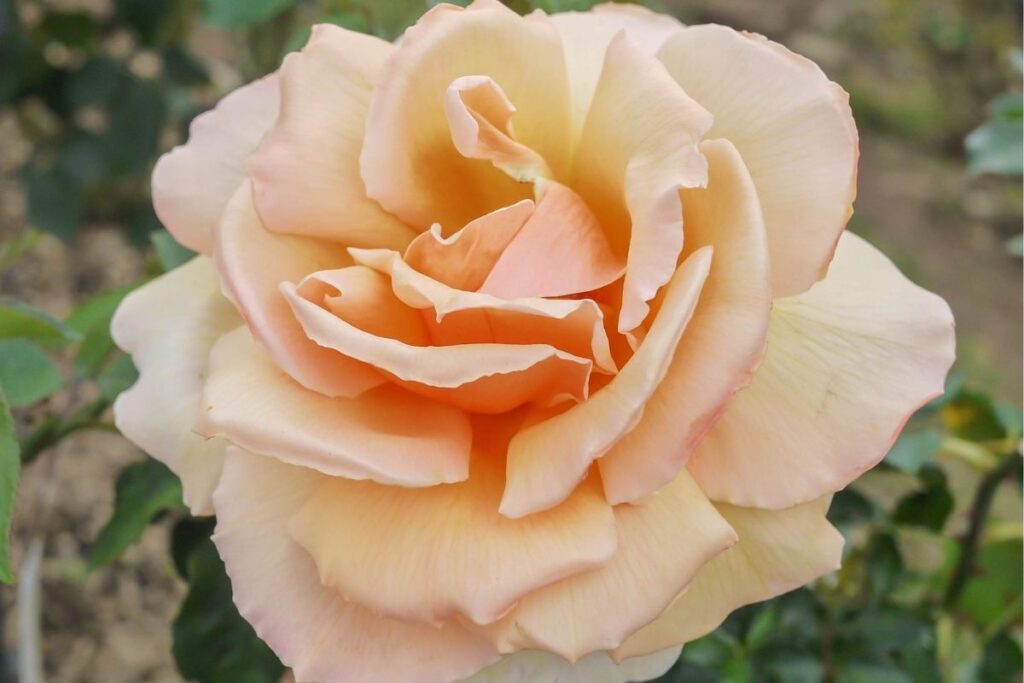
The Ethiopian Rose is the only native rose to Africa. The cream-colored rose can reach 15cm in diameter making it one of the largest in the world. The delicate flower has soft, delicate layers of petals that form a round symmetrical shape on top of a long stem.
Grown at high altitudes the rose produces rich fruit, high in vitamins that are eaten regularly during food shortages. They are a common symbol of love in Ethiopia, being used on a number of different occasions.
Red-Hot Poker
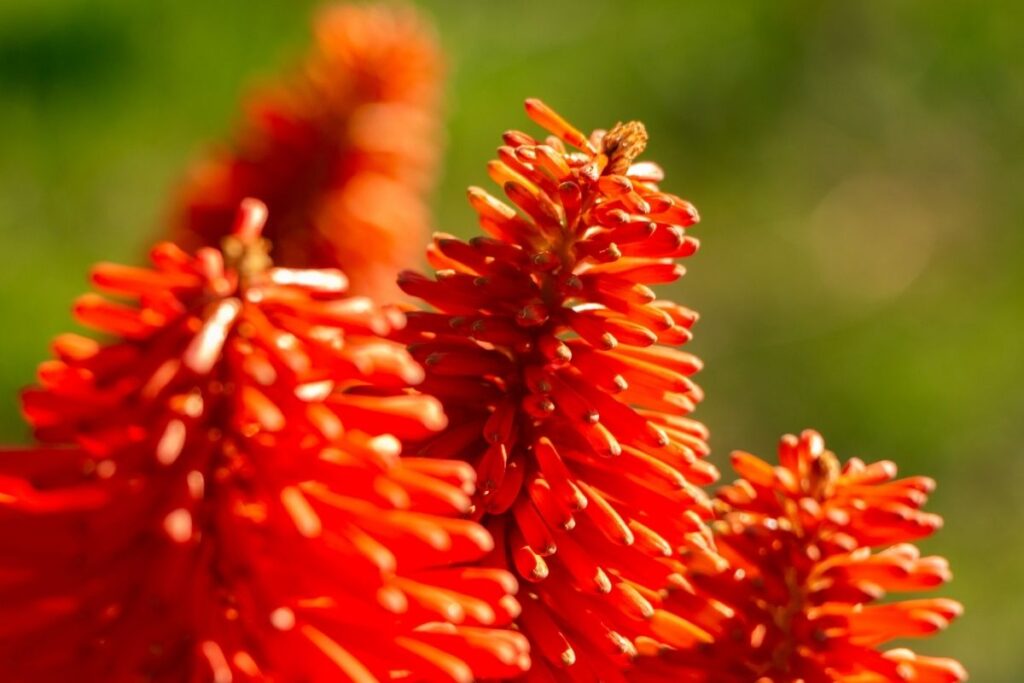
The Red-Hot poker flower grows during mid-summer throughout Ethiopia. It is one of the most popular tourist attractions in the Bale Mountains. With strong, striking colors such as red and orange, these unique rocket-shaped flowers attract hummingbirds.
Usually growing on a shrub the flowers bloom from the bottom upward. Each stem has one solitary flower. They grow well in open sunny locations in soil that is well-drained.
Hagenia Flower

Known locally as the kosso plant, the hagenia is a native Ethiopian plant that has a divine fragrant white, purple, orange, or green colored flower. Used as a common herbal medicine this plant typically grows at high altitudes above 6,500 feet.
The umbrella crown flowers are large and attractive making them a great ornamental flower, adding vibrancy to any garden.
Eucalyptus Flower
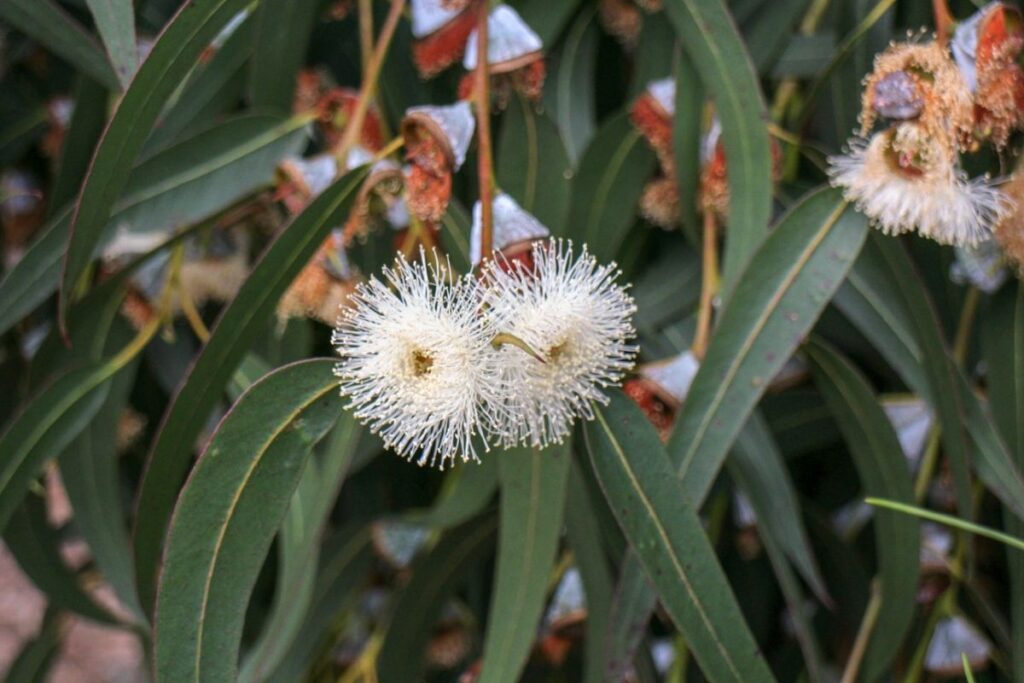
Considered to be an ancient plant the Ethiopian eucalyptus flower is an offshoot of the world’s tallest species of flower. The tall eucalyptus tree produces hundreds of fluffy stamens that then produce colorful florets. These florets can be pink, yellow, cream, red, or white.
The stamens begin enclosed in a small-cap of fused petals. As they expand the petals split away for the base, revealing a fully grown eucalyptus flower with no petals. The strange-looking flower when bloomed looks almost like a spider’s web.
Meskel Flowers
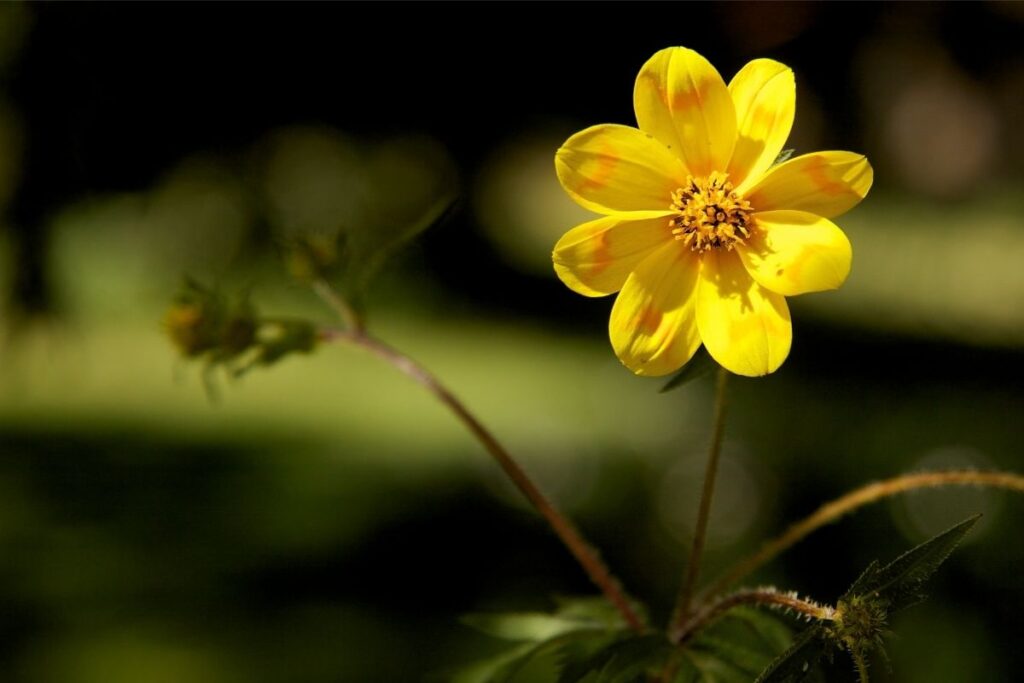
Meskel flowers are a beautiful addition to any garden. The small yellow flowers are a type of daisy that can also be found in the U.S. They have at least six petals and a small brown center.
In Ethiopia, they represent happiness and new beginnings. Once fully grown the Meskel flower can be ingested. Usually, they are used to decorate flower beds or as an ornamental piece on a special occasion.
Socotra Desert Rose

The Ethiopian desert rose is a flowering shrub that grows mainly in the wild but it is becoming a more popular cultivated flower. It is known for its breathtaking appearance.
The blossom on a desert rose plant has a star-like shape, is pink in color, and has five small, delicate petals. The flowers on a desert rose plant are supposed to bring wealth to the owner.
RELATED: As Fresh As A Rose: 20 Different Types Of Rose Of Sharon Flowers
Erythrina Abyssinica
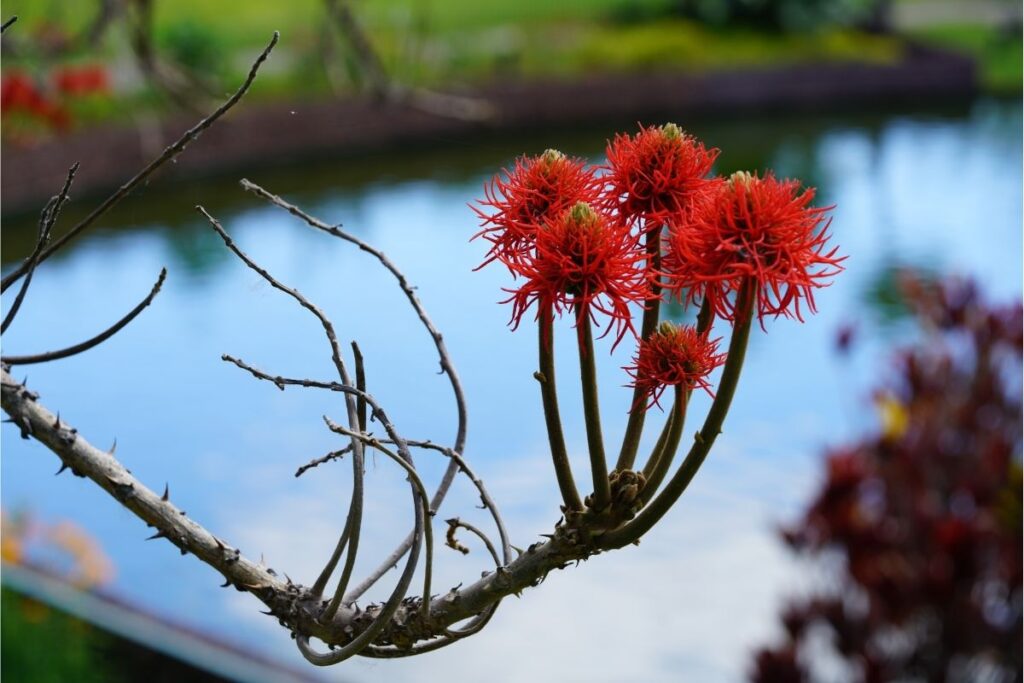
Mainly planted in the shade it is believed this flower offers medicinal purposes. It is commonly used in the treatment of snakebites, malaria, and sexually transmitted diseases. Classified as a type of tree the flowers on this plant look unbelievably unique.
Growing upwards or hanging below the branches the stringy orange flowers grow in clusters. These tropical trees can actually be used to plant a live fence which is a pretty cool way of closing your garden off.
Ethiopian Coffea Arabica
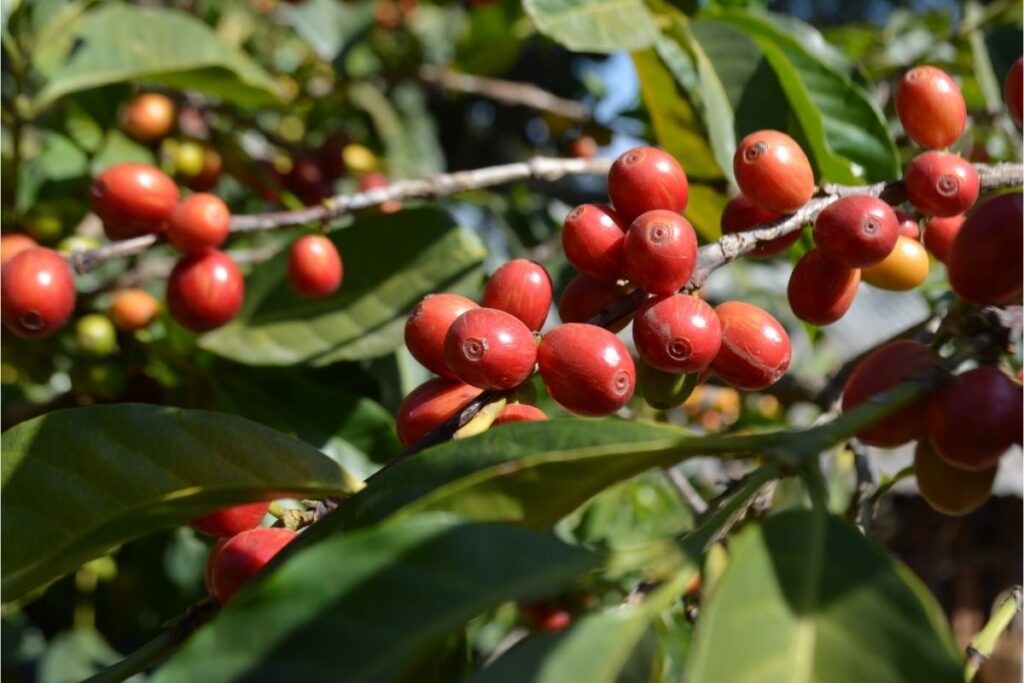
Coffea arabica also known as Arabian coffee is an interesting species of flowering plant in the coffee family. It is believed to be the first coffee plant to be cultivated. 60% of the world’s coffee is produced from this plant.
The flowers on the coffea arabica plant bloom in a large, long cluster of small, creamy-white flowers with four or five petals. Though it is primarily the coffee beans this plant is grown for, the flowers do look great.
To grow effectively this plant needs to grow under the shade of trees within forest-like environments.
Giant Lobelias
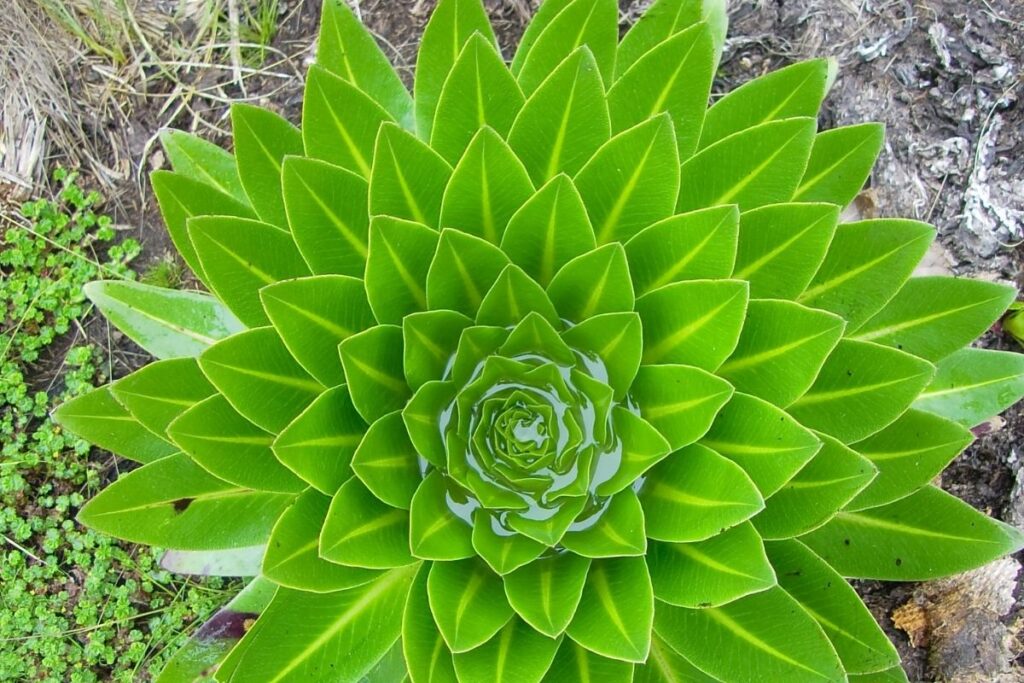
A giant lobelias tree has the appearance of a small palm plant. Very dangerous if swallowed, this tree actually has a very unpleasant, intense odor similar to that of tobacco. Needless to say, despite its interesting look you wouldn’t want to plant it in your garden.
The plant forms a rosette of bluey-green, hairy leaves which an enormous flower spike rises out of with small purple flowers hiding among the silvery bracts. The spike can reach 3m tall. Once the spike has reached maturity the plant will die.
Crinum Macowanii
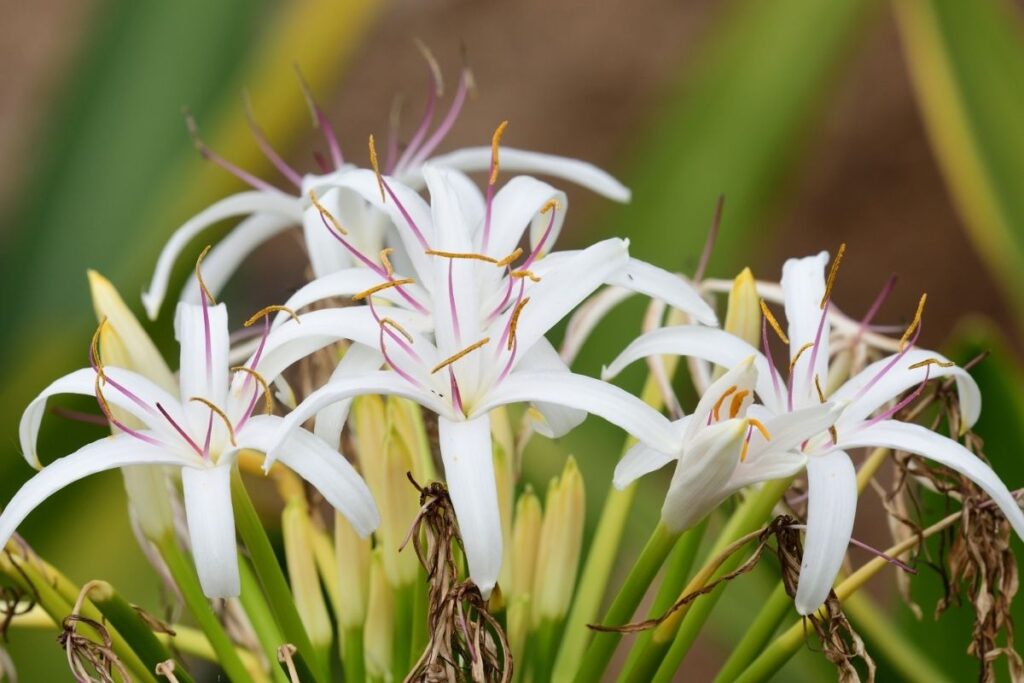
Crinum Macowanii is a deciduous bulbous plant indigenous to Africa. It has a long, slender bell-shaped flower that has a delightfully fresh floral scent. The flowers are white in color apart from dark pink stripes that run through the middle.
If you want to grow this lovely flower, ensure you plant it in full sun, fertile soil, and give it heavy watering during the summer months. This will ensure it thrives.
Pink Morning Glory
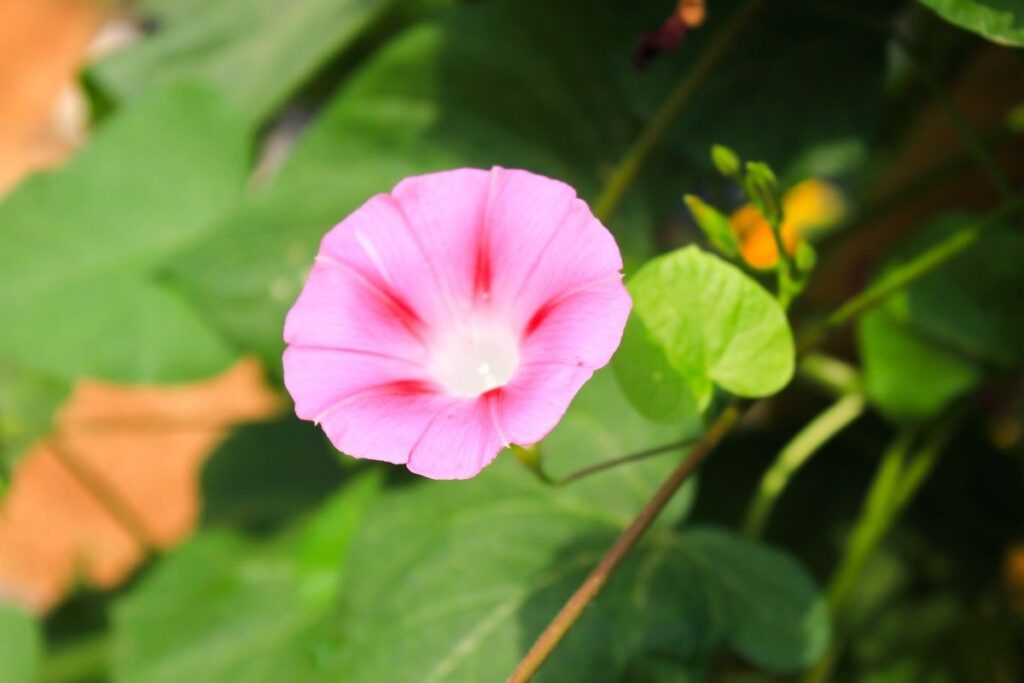
The pink morning glory plant is an annual vine plant that features heart-shaped leaves and flowers that are pink, purple, or white in color and about 7cm in diameter. The solitary flowers found at the end of the thin stems are almost perfectly circular in shape.
In some parts of Africa, this plant has actually become a troublesome weed. Though it doesn’t have many uses in Ethiopia, it is frequently used as a laxative in Asia. Despite the negative press the flower has received it still symbolizes love, gratitude, and romance.
Jatropha Curcas
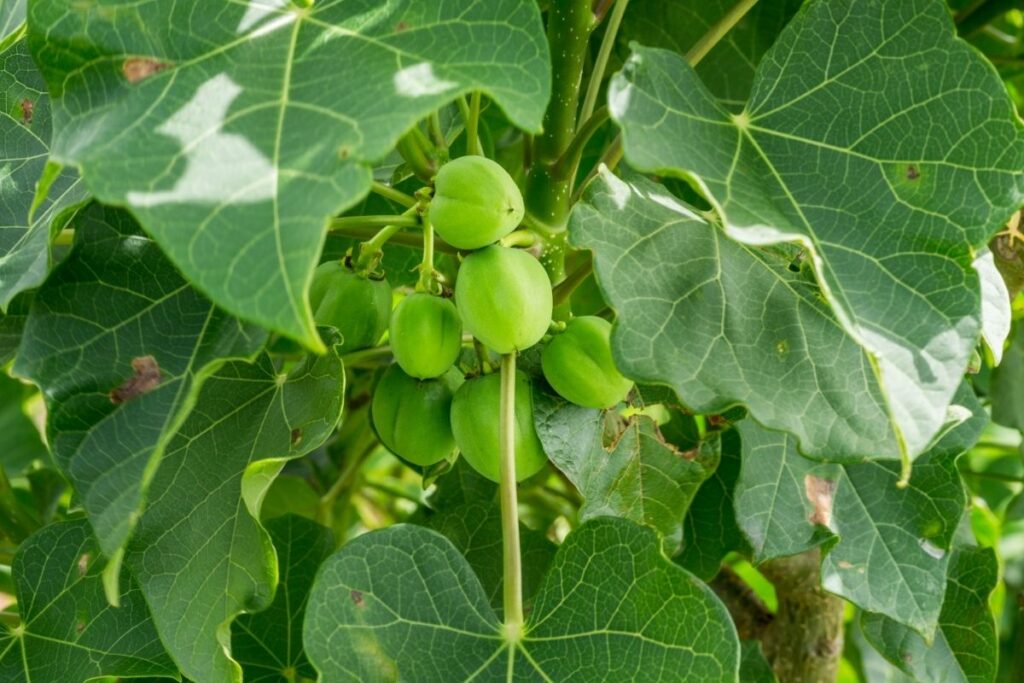
Jatropha curcas is a flower containing oil that only grows in tropical or subtropical climates. Though it is primarily native to Mexico and America it is a common sight in Ethiopia. The plant produces small soapy clusters of incredibly small yellow and green flowers.
When they bloom they open up to show a shiny interior made up of five petals. They can also be found in red. Aside from being used in the soap industry, they have also received a lot of attention for their potential use as a raw material in the biodiesel industry.
Nicotiana Glauca
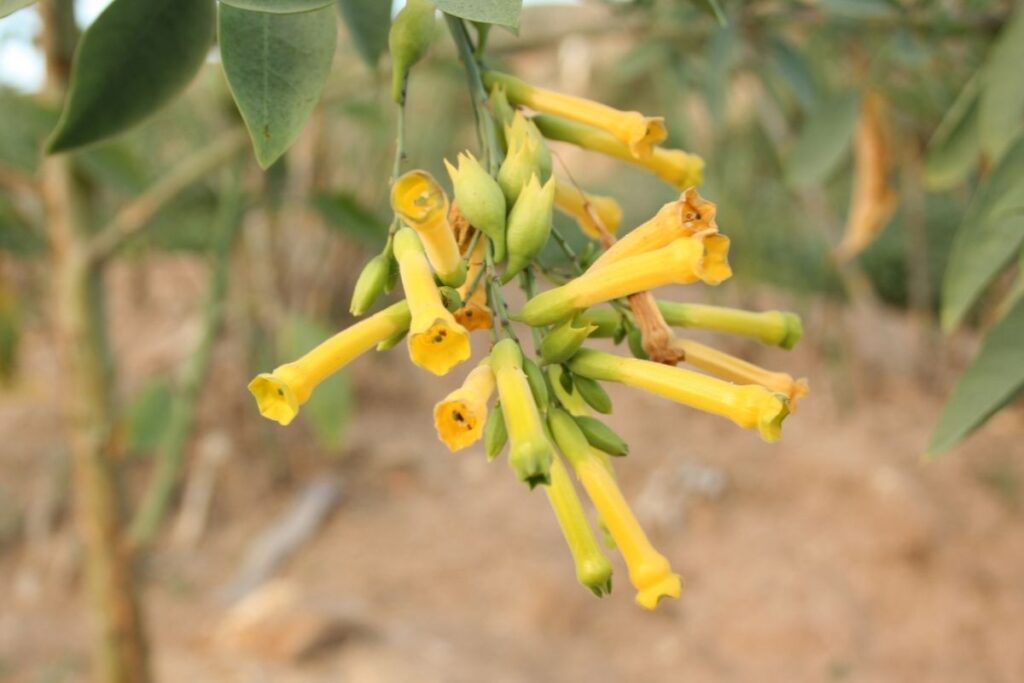
This plant is also known by its common name tree tobacco as it is a species of wild tobacco. Growing to heights of more than two meters this plant is now widespread in Ethiopia.
The flowers on the nicotiana glauca plant are tubular in shape starting green in color and ending a bright yellow towards the tip of each flower.
Each stem has dark green leaves that can be fatal when ingested and small bunches of the flower. Although the leaves are highly poisonous this plant is regularly used to treat inflamed throat or swollen glands.
Aloe
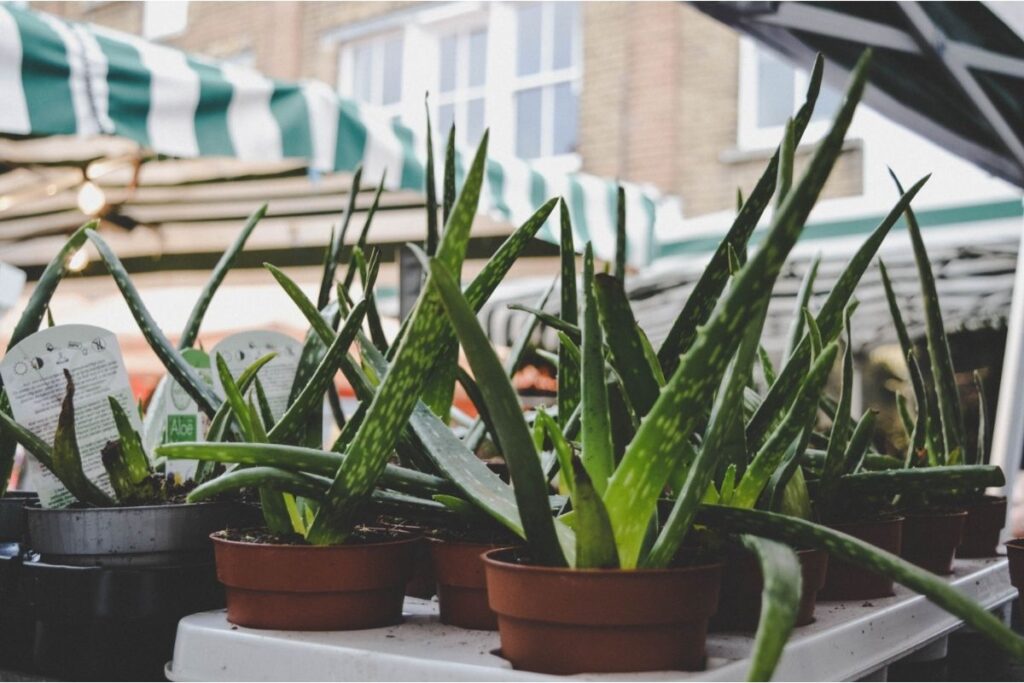
There are over 45 different species of aloe in Ethiopia with 66% of these being endemic to the country. Aloes have great significance in Ethiopia as they are an important source of traditional medicine. Also used to produce soap aloe is a short-stemmed shrub.
The leaves on the plant are erect and succulent, forming a rosette around the flower. The flower is tubular and comes in orange, pink, yellow, or red. They are densely clustered in a pendant shape.
Amorphophallus Abyssinicus
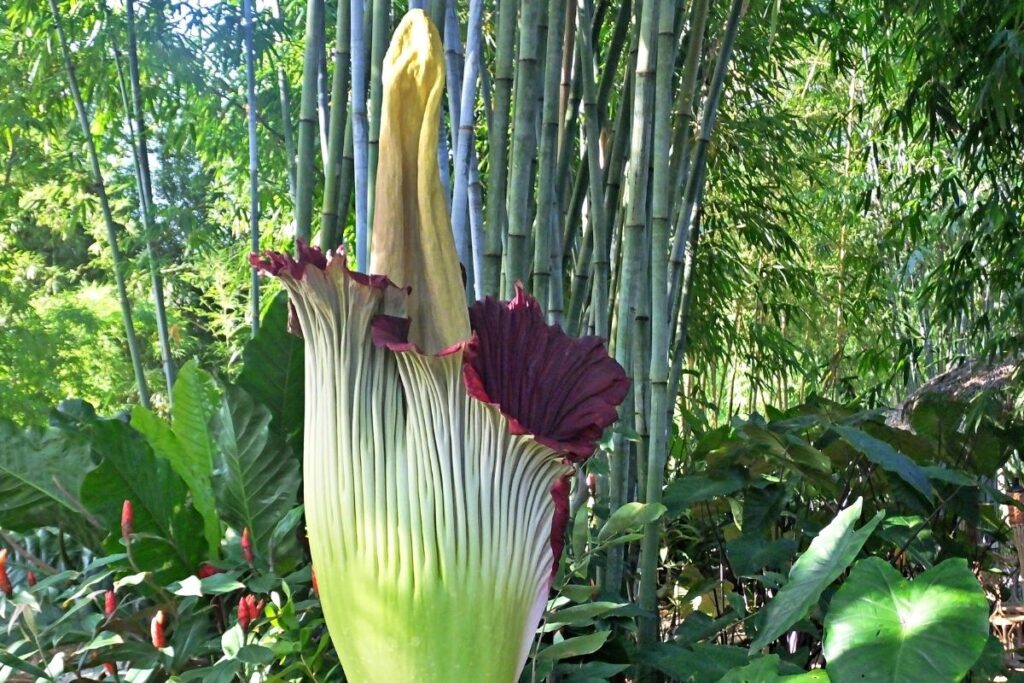
Amorphophallus abyssinicus is a perennial herb that grows from a tuberous root. The flower on this herb is hard to describe simply because it looks like something out of this world. It has a long fleshy stalk and one solitary flower that in all honesty doesn’t look very appealing.
The fact many call it the corpse plant sort of sums things up. The flower head appears before the leaf and is enclosed by a spathe that has a very dark brownish-purple color inside. It is usually a lot paler on the outside.
Throughout Africa, the amorphophallus abyssinicus is used as a cure for ‘delayed birth’. They are also gathered from the wild in times of food shortages so that the local people have something to eat.
Final Thoughts
As you can see from this list there is a wide range of flowers in Ethiopia that range from completely crazy and unique to beautiful and fragrant. Around the world flowers are used for lots of different things but when taking a look at Ethiopia and its flowers you get the feeling they are so much more.
To a lot of us, flowers are seen as a way of adding color to our home or as the perfect gift to show our love, but while flowers are still used for those reasons in Ethiopia they are also so much more important.
In Ethiopia, many plants are also used as a vital food source during shortages. They are also used in medicine to treat certain illnesses.
Hopefully, now you’ve read our list of the weird and wonderful plants of Ethiopia you have a better understanding of what they are, what they mean, and what sort of conditions some of them need to grow.
Now you have this understanding why not see if you can grow some of the flowers on this list. With some more research, care, and patience you could add a lot more unique flowers to your garden that will bring plenty of colors and some interesting floral aromas.







